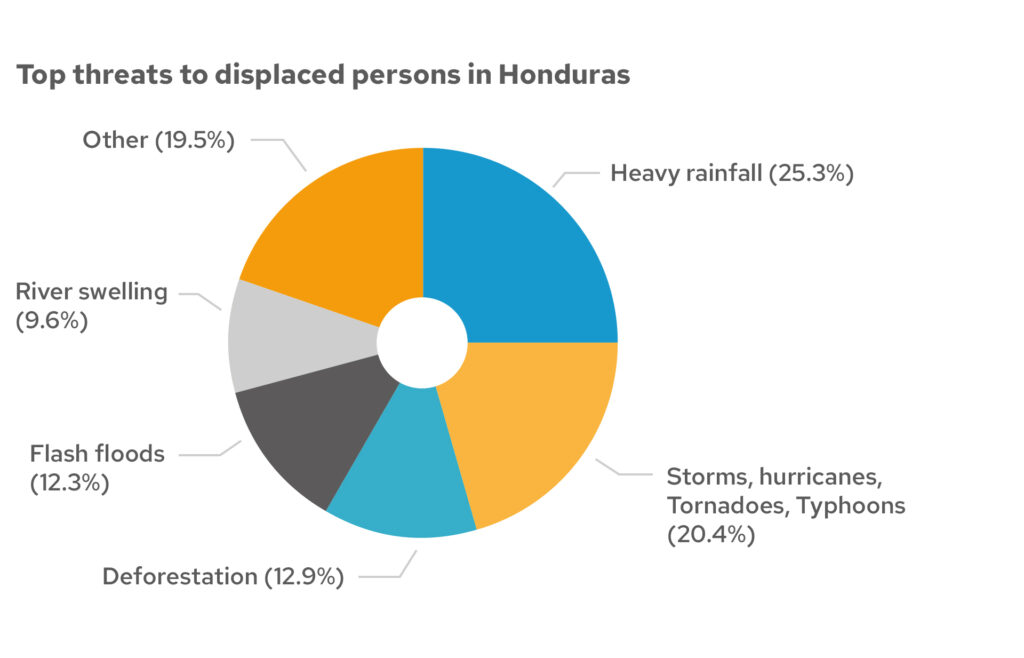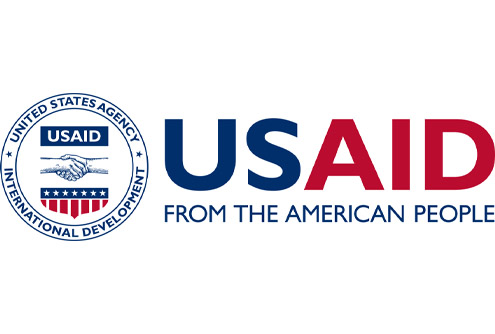FORCED DISPLACEMENT
Finding 4: Climate change increases risk
Disaster displacement is an ever growing risk, exacerbated by the increasing impact of climate change on disaster risk.
Whilst attention is placed on conflict related displacement, the growing and increasingly complex risks of climate change are increasing disaster displacement at alarming rates. Disaster displacement is significantly triggered by storms, forcing 14.6 million new displacements in the last year, and floods causing 14 million more. The most significant trigger for conflict and violence was armed conflict forcing 7.5 million people from their homes last year.
Of the 185 who shared their displacement stories with us, climate change was the most stated issue that was increasing disaster risk for displacement affected populations.
“The impacts of climate change are numerous and may both trigger displacement and worsen living conditions or hamper return for those who have already been displaced. Limited natural resources, such as drinking water, are becoming even scarcer in many parts of Tonga.”
GNDR member in Tonga
Displacement in El Salvador and Honduras
Whilst climate change related factors were not cited as much as expected throughout VFL given the high risk of flash flooding globally, there were some clear examples of its impact. In El Salvador and Honduras, displaced communities living on the outskirts of urban areas had moved there due to results of climate change. The threats they continue to face are, in Honduras, heavy rainfall (25.3%), extreme weather events such as storms, hurricanes, tornadoes and typhoons (20.4%) and deforestation (12.9%) and, in El Salvador, drought (50%) and flash floods (35%).

Experiences of displaced persons in South Sudan
In South Sudan, two million have been internally displaced due to conflict arising from ethnic divides since 2013. Inter-communal violence and recurrent natural hazards such as floods and drought have further aggravated displacement. Focusing research on displaced communities on the edge of Juba, and along the River Nile, it is the consequence of climate change and ongoing hazards to health that are alarming. They are at high risk of secondary displacement. Despite these communities being aware of floods, they stick around these areas because of the perceived economic benefits e.g. they farm vegetable gardens and practice fishing along the river banks to make a living.
The biggest concerns of consequences due to the risks faced were disease (20%) and hunger (19%). “The rate of malnutrition is very high among the displaced persons especially among children, lactating and pregnant mothers. Pit latrines are filled up but people still have to use them and they have to cook just near those latrines. There is a high chance for an outbreak of diseases here”. Another stakeholder interviewed said, “Some of the families since they arrived have not got better shelter. So rains and sun heat always affect them.”
Global Finding 5: Responses not localised
Next chapterForced Displacement Global Paper
ContentsCredits
Main photo: A Syrian girl waves from the balcony of an unfinished apartment block in northern Lebanon. Credit: DFID
Pie chart: Community-level data from our Making Displacement Safer programme.
Project funded by
United States Agency for International Development

Our Making Displacement Safer project is made possible by the support of the American People through the United States Agency for International Development (USAID) – Bureau for Humanitarian Assistance. Content related to this project on our website was made possible by the support of the USAID. All content is the sole responsibility of GNDR and does not necessarily reflect the views of the USAID.
Visit their websiteBecome a member
Membership is free and open to all civil society organisations that work in disaster risk reduction or have an interest in strengthening the resilience of communities.
Join GNDR